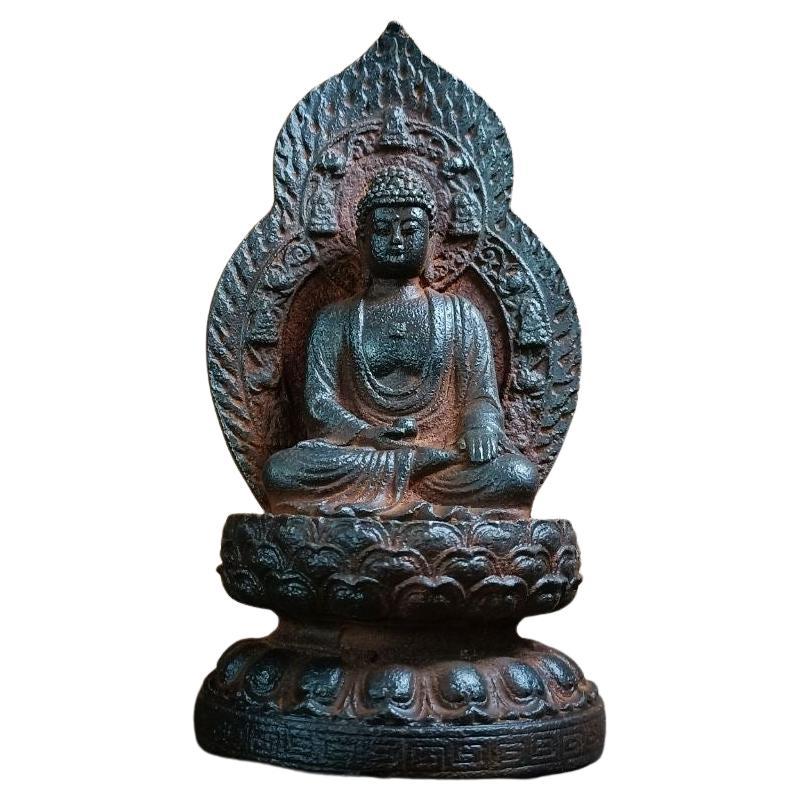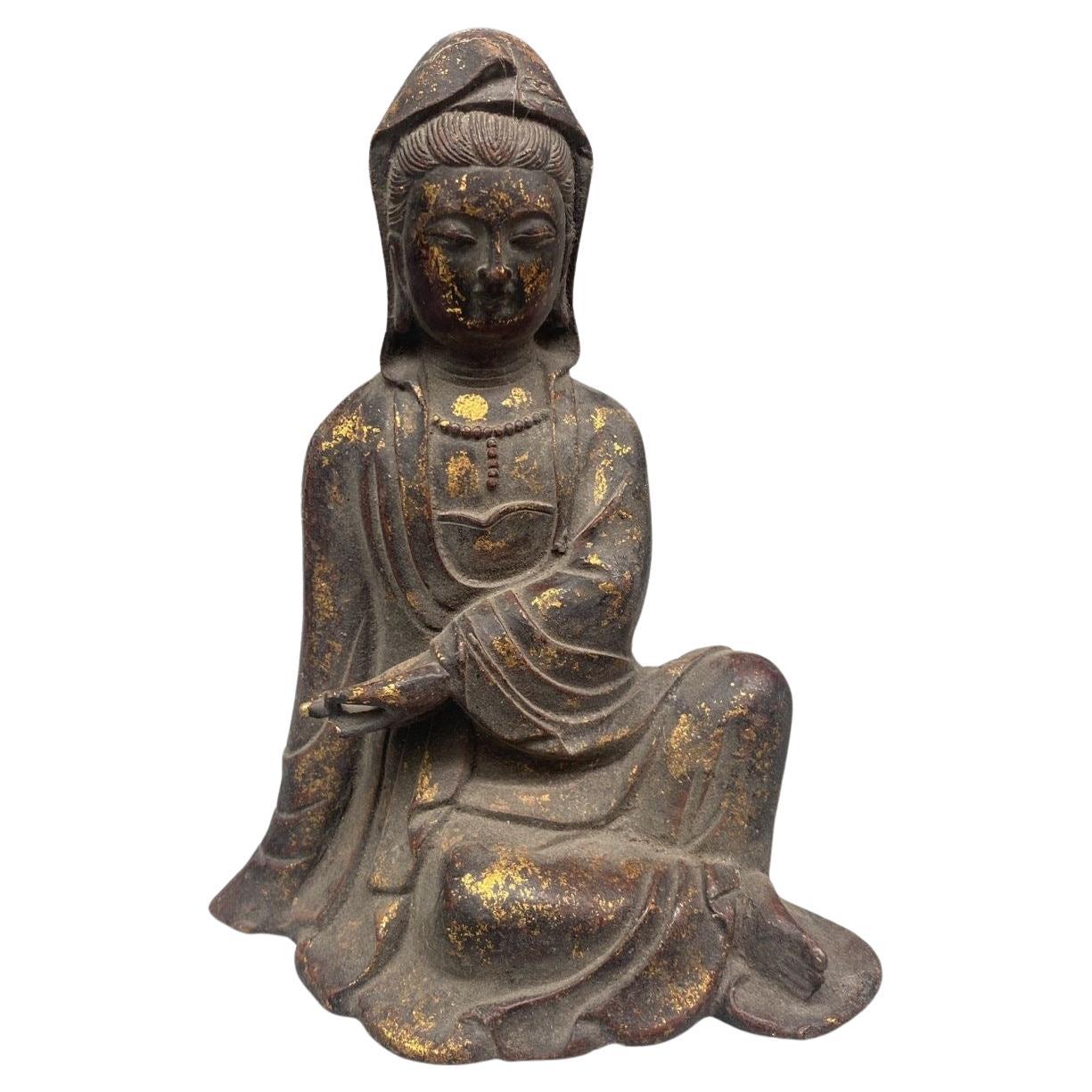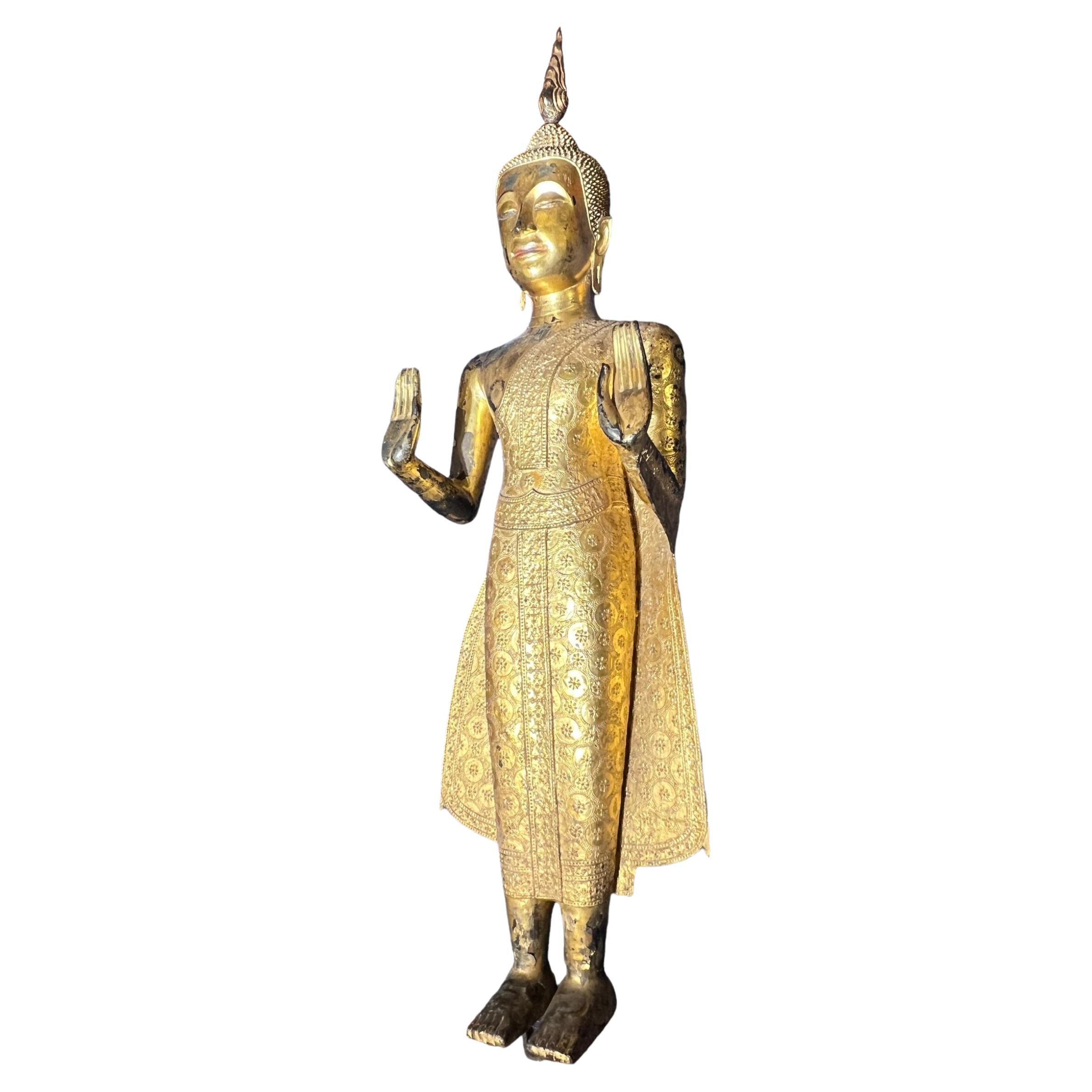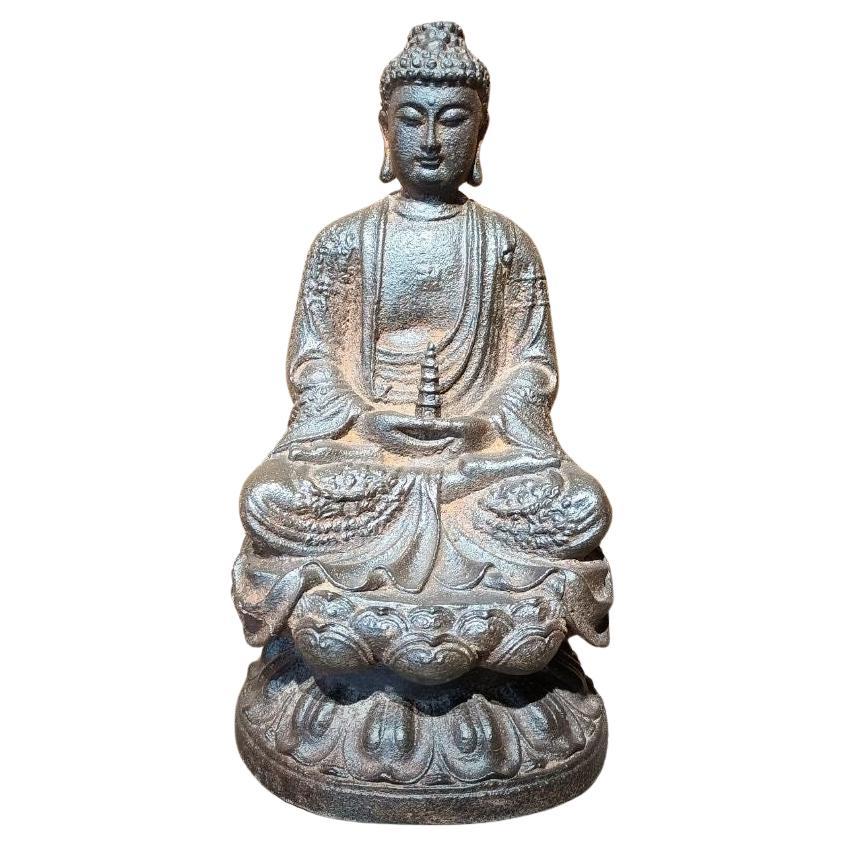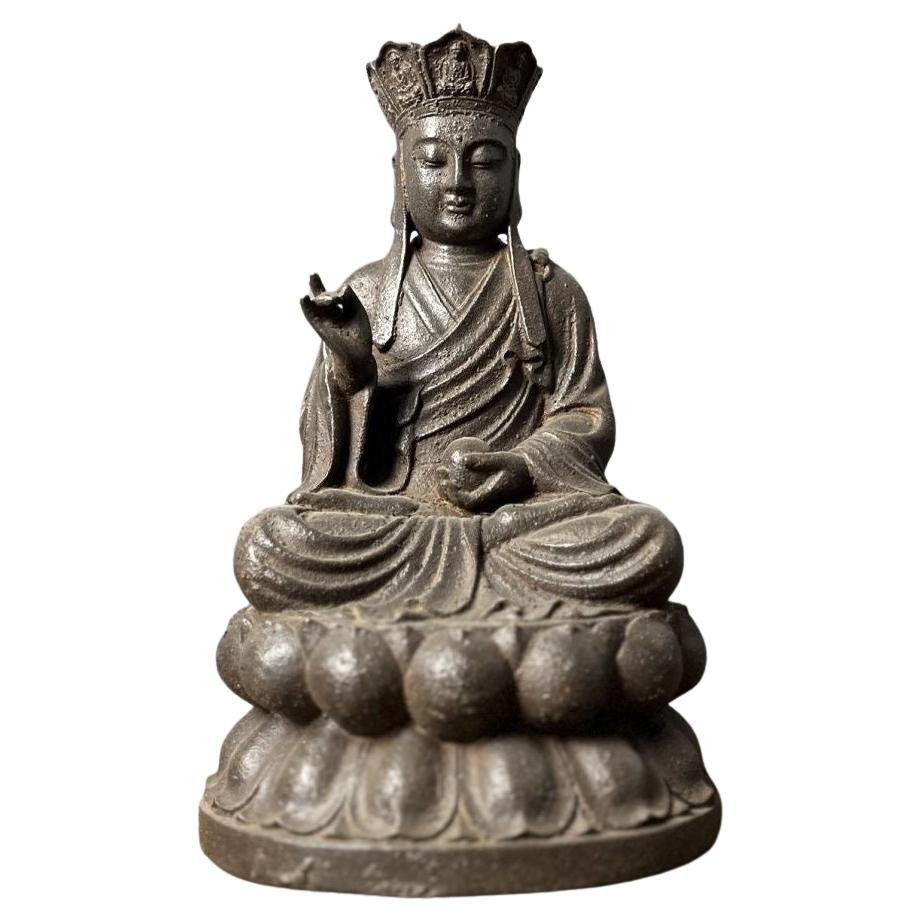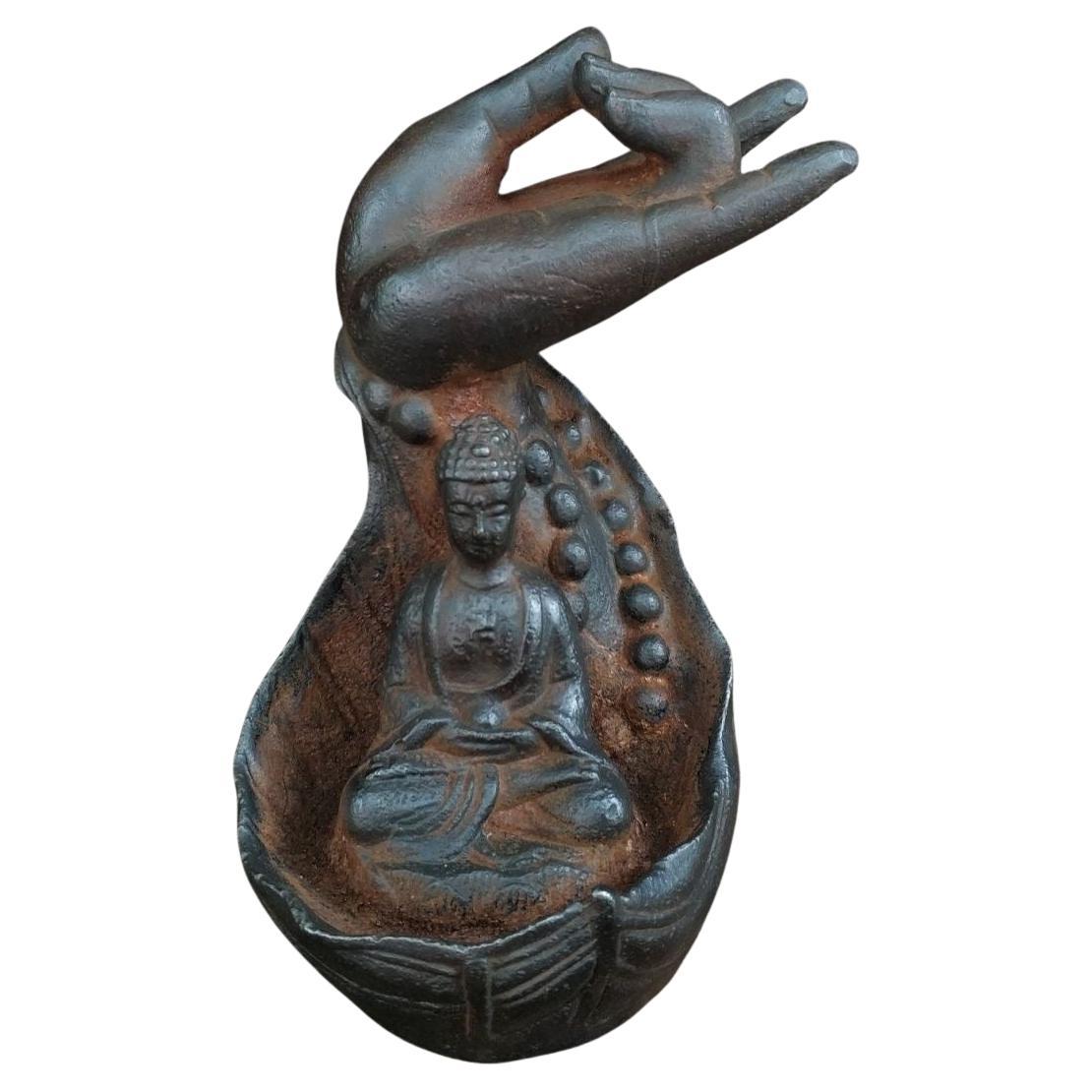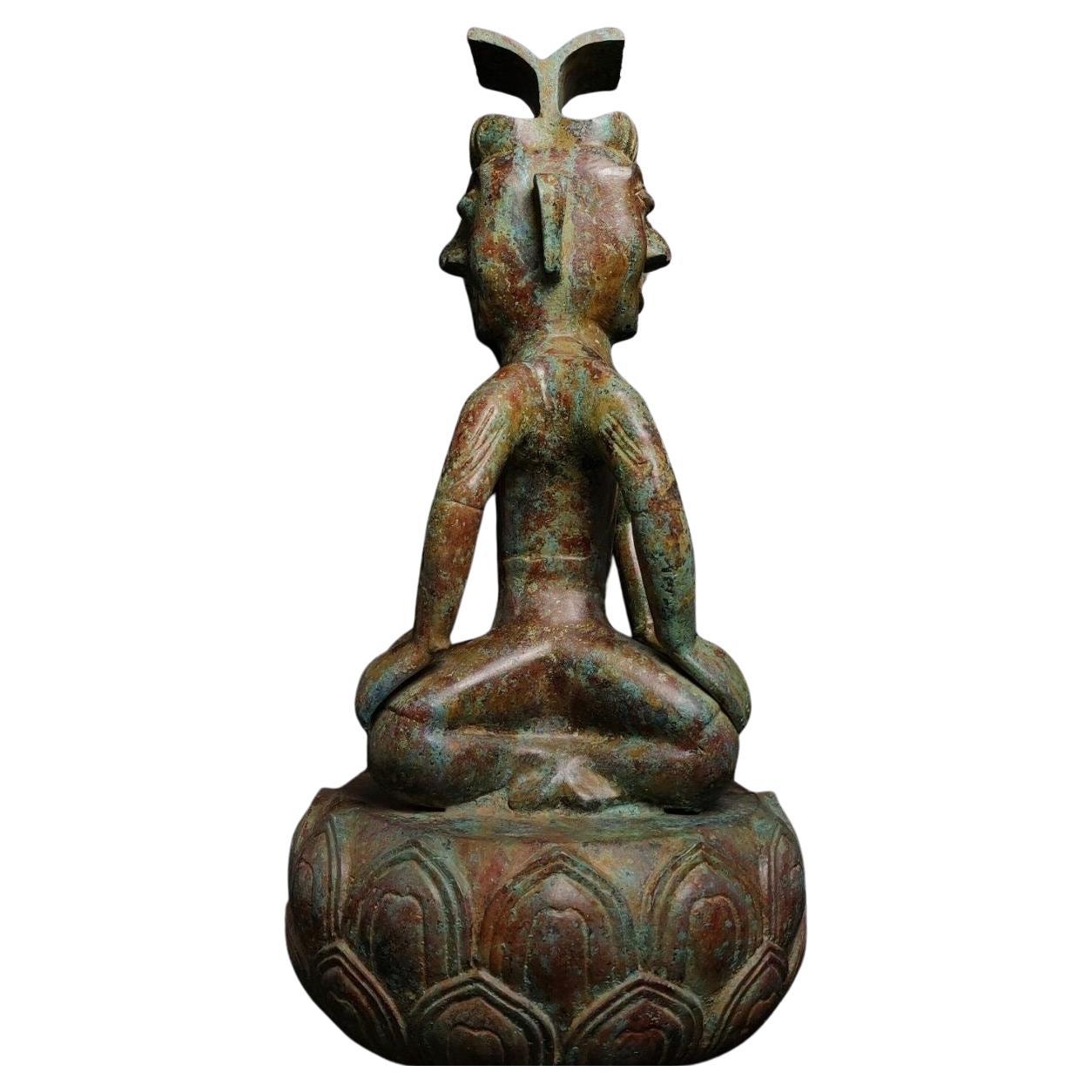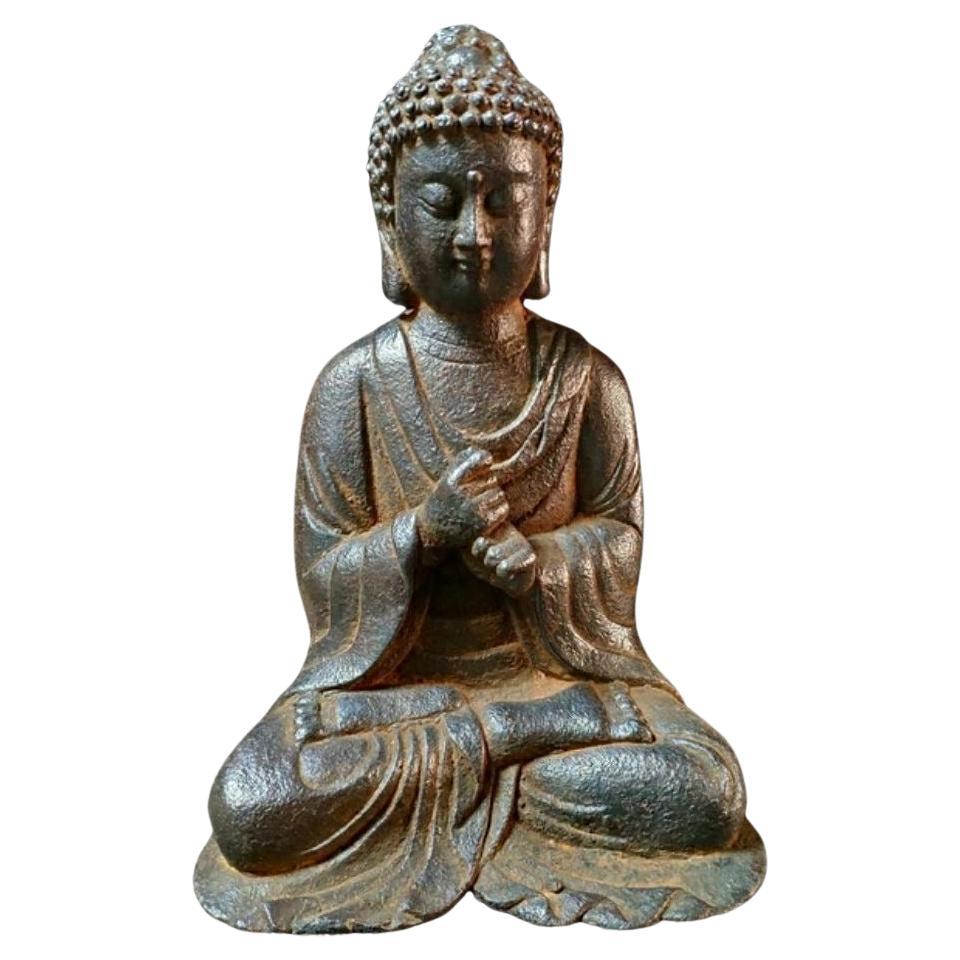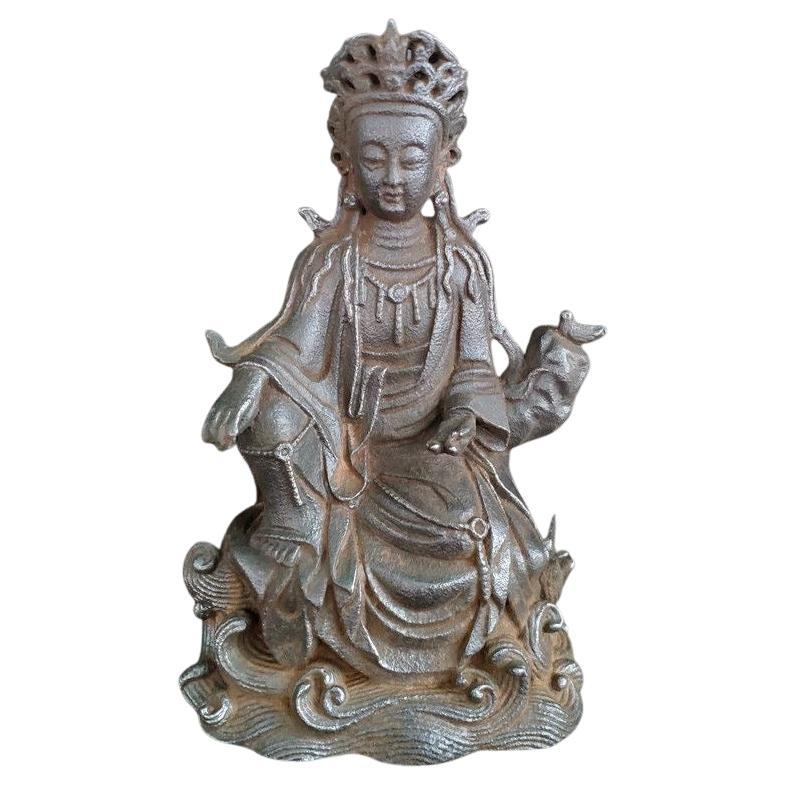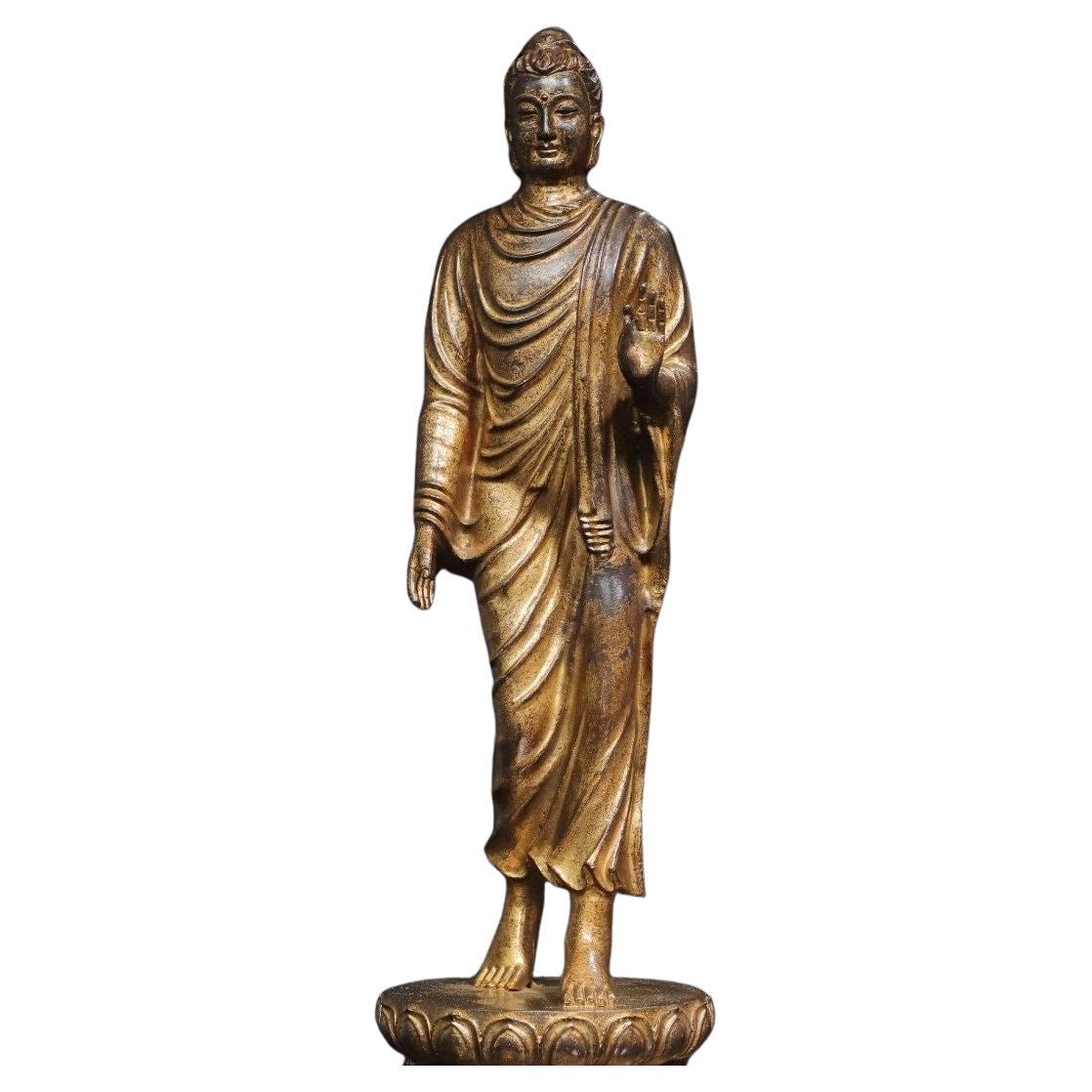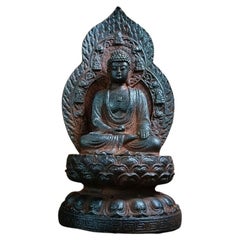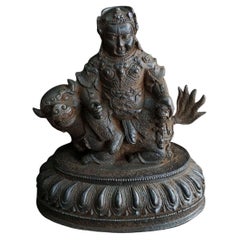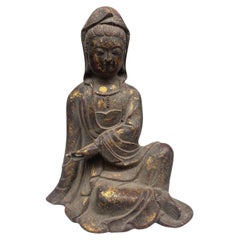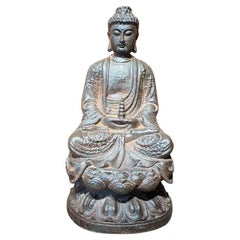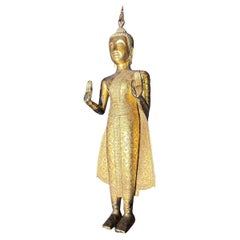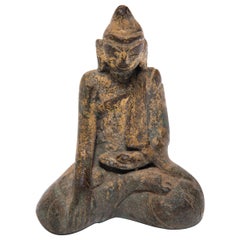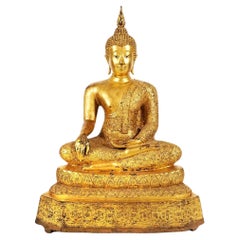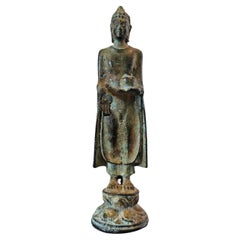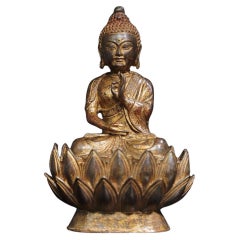
Ancient Gilt Bronze Sitting on Lotus Buddha Statue
View Similar Items
Want more images or videos?
Request additional images or videos from the seller
1 of 11
Ancient Gilt Bronze Sitting on Lotus Buddha Statue
About the Item
- Dimensions:Height: 7.88 in (20 cm)Width: 4.73 in (12 cm)Depth: 3.94 in (10 cm)
- Materials and Techniques:
- Period:
- Date of Manufacture:unknown
- Condition:Wear consistent with age and use.
- Seller Location:景德镇市, CN
- Reference Number:1stDibs: LU8718239281462
About the Seller
5.0
Platinum Seller
Premium sellers with a 4.7+ rating and 24-hour response times
Established in 2017
1stDibs seller since 2023
21 sales on 1stDibs
Typical response time: 3 hours
Authenticity Guarantee
In the unlikely event there’s an issue with an item’s authenticity, contact us within 1 year for a full refund. DetailsMoney-Back Guarantee
If your item is not as described, is damaged in transit, or does not arrive, contact us within 7 days for a full refund. Details24-Hour Cancellation
You have a 24-hour grace period in which to reconsider your purchase, with no questions asked.Vetted Professional Sellers
Our world-class sellers must adhere to strict standards for service and quality, maintaining the integrity of our listings.Price-Match Guarantee
If you find that a seller listed the same item for a lower price elsewhere, we’ll match it.Trusted Global Delivery
Our best-in-class carrier network provides specialized shipping options worldwide, including custom delivery.More From This Seller
View AllVintage Chinese Iron Buddha Statue Sitting on Lotus
Located in 景德镇市, CN
This Vintage Chinese Iron Buddha Statue beautifully captures the serene presence of the Buddha seated gracefully atop a lotus flower, a powerful symbol of purity, enlightenment, and ...
Category
Antique 19th Century Metalwork
Materials
Iron
19th Century Iron Skanda Buddha Sitting on Lion Statue
Located in 景德镇市, CN
19th Century Iron Skanda Buddha Sitting on Lion Statue – A Symbol of Strength and Protection
This 19th Century Iron Skanda Buddha Statue depicts the Buddha in a powerful and protect...
Category
Antique 19th Century Metalwork
Materials
Iron
Old Asian Iron Sitting Buddha Statue with One Hand on Floor
Located in 景德镇市, CN
This Old Asian Iron Sitting Buddha Statue is a captivating representation of serenity and spiritual wisdom, featuring the Buddha in a meditative pose with one hand resting on the flo...
Category
Antique 19th Century Metalwork
Materials
Iron
Old Asian Iron Sitting Pagoda-Holding Buddha Statue
Located in 景德镇市, CN
Old Asian Iron Sitting Buddha Statue Holding Pagoda – Symbol of Wisdom & Inner Peace
Add spiritual depth and timeless charm to your collection with this Old Asian Iron Sitting Buddh...
Category
20th Century Metalwork
Materials
Iron
Old Chinese Iron Sitting Kṣitigarbha Bodhisattva Buddha Statue
Located in 景德镇市, CN
Old Chinese Iron Sitting Kṣitigarbha Bodhisattva Statue – Guardian of Souls & Symbol of Compassion
Honor the deep spiritual traditions of East Asia with this Old Chinese Iron Statue...
Category
20th Century Metalwork
Materials
Iron
19th Century Asian Iron Buddha Sitting Under Buddha Hand Statue
Located in 景德镇市, CN
19th Century Asian Iron Buddha Sitting Under Buddha Hand Statue – A Symbol of Protection and Enlightenment
This 19th Century Asian Iron Buddha Stat...
Category
Antique 19th Century Metalwork
Materials
Iron
You May Also Like
Large Pang Ham Yati (Monday Buddha) Gilt Bronze Statue
Located in New York, NY
Exceptional gilt bronze sculpture with some mica inlay of a standing Pang Ham Yati (known as the Monday Buddha), holding his hands in a double abhaya mudra. Originally mounted on a pedestal base, its original mounting hardware remains on underside of the feet. From the period of Rattanakosin – Rama V...
Category
Antique 19th Century Thai Metalwork
Materials
Bronze
Thai Gilt Bronze Seated Buddha, c. 1850
Located in Chicago, IL
Once ornately gilt, this serene bronze seated Buddha was created in Thailand in the mid-19th century. Cast in the older Sukhothai style, the Buddha bears a uniquely Thai flame-like s...
Category
Antique Mid-19th Century Thai Metalwork
Materials
Bronze
Large Gilt Bronze Thai Rattanakosin Buddha
Located in Montreal, QC
Large gilt bronze Thai Rattanakosin buddha eyes inlaid with mother pearl
Category
20th Century Thai Metalwork
Materials
Bronze
Small Antique Thai Ayutthaya Period Bronze Healing Medicine Buddha Figure Statue
Located in Forney, TX
A scarce small antique Southeast Asian Ayutthaya Period bronze Bhaisajyaguru (the Buddha of healing and medicine) religious icon statue.
18th Century or earlier, Siam / Thailand, exceptionally executed metalwork, especially considering its age and diminutive scale, rare pose combination, depicted standing on lotus flower pedestal, holding a gallipot (apothecary jar) in his left hand, right hand in Varada Mudra gesture with palm facing outward and fingers pointing down to the ground. The Varada Mudra is a gesture of compassion and wish-granting that represents open-handed generosity and granting of wishes. The medicine Buddha is described as a doctor who cures suffering using the medicine of his teachings and brings healing.
Makes for a wonderful decorative object or thoughtful gift, sure to add a touch of whimsical elegance, serene warmth, balance, and tranquility to any space!
Provenance / Acquisition:
A private Gentleman's Dallas, Texas fine art and antiques collection
Acquired from the highly reputable auction house Dallas Auction Gallery; Dallas, Texas. Owned and curated by Reyne Hirsch, a media personality and expert in 20th century decorative arts. She's was a top appraiser for Antiques Roadshow...
Category
Antique 18th Century Southeast Asian Metalwork
Materials
Bronze
A Monumental Gilt-Lacquered Bronze Ornamental Buddha Sculpture of Vajravidarana
Located in New York, NY
A Monumental Gilt-Lacquered Bronze Ornamental Buddha Sculpture of Vajravidarana:
A Masterpiece of Sino-Tibetan Craftsmanship, Late 19th Century, Qing Dynasty
This monumental gilt-lacquered bronze ornamental sculpture of Vajravidarana is an extraordinary and commanding piece of art, showcasing the pinnacle of Sino-Tibetan craftsmanship from the late 19th century. The figure of Vajravidarana, a powerful purification deity in Tibetan Buddhism, is meticulously sculpted to embody both spiritual authority and artistic excellence.
Vajravidarana is primarily known for his role in removing spiritual impurities and negativities. Unlike other deities associated with wisdom or compassion, Vajravidarana’s function is centered on purification and healing. He is typically depicted holding a vajra and a bell, symbolizing the cutting away of delusions and the resonance of divine truth. In this striking sculpture, Vajravidarana is shown holding a vishva vajra (the double vajra), a unique and powerful variation of the traditional iconography, which signifies ultimate protection and the dispelling of negative karma.
Vajravidarana: The Supreme Purifier and Protector
Vajravidarana is revered in Tibetan Buddhism as the deity of spiritual purification, called upon to cleanse practitioners of defilements and negative influences. His vajra represents the indestructibility of truth, while his bell signifies the wisdom that resonates through purification rituals. In this sculpture, the presence of the vishva vajra, or double vajra, enhances his association with supreme protection, ensuring the destruction of all spiritual obstacles and afflictions.
The figure’s powerful yet composed expression conveys a sense of unwavering resolve and divine authority. His posture, along with the carefully sculpted details of his robes and ornaments, highlights his function as a guardian against impurity. The inclusion of the vishva vajra rather than the usual single vajra reinforces his role as a supreme protector, capable of dispelling all forms of negativity and restoring balance.
Symbolism of the Mantras and Aureole:
Unlike deities that embody wisdom through duality, Vajravidarana’s iconography is centered on purification and exorcism. The aureole surrounding him is inscribed with sacred purification mantras rather than depictions of a consort. These mantras emphasize his function as a remover of obstacles and impurities, reinforcing his role in Buddhist healing rituals.
The presence of the sacred inscriptions elevates the sculpture’s spiritual significance, making it a focal point for meditation and ritual purification. Practitioners often visualize Vajravidarana radiating purifying light, dissolving afflictions and negative karma. This theme is mirrored in the sculptural repetition of the purification symbols on the aureole, reinforcing the deity’s role as a divine cleanser.
Gilt-Lacquered Bronze: The Artistry of Sino-Tibetan Metalwork:
The craftsmanship of this monumental figure reflects the expertise of late 19th-century Sino-Tibetan metalwork, where traditional Tibetan themes were infused with Chinese artistic sensibilities. Cast in bronze and finished with a rich gilt lacquer, the statue has an otherworldly glow, giving it an ethereal, almost divine presence. The gilding process—applied with exceptional skill—gives the sculpture a striking luminosity that enhances the fine details of the facial features, flowing robes, jewelry, and other elements of the deity’s attire.
The technique employed to create this figure speaks to the high level of craftsmanship that flourished during the late Qing Dynasty and early modern Tibetan art. The ornate details of the robes and the fine texture of the sculpture highlight the exceptional skill of the artisans who brought this work to life. The use of gold and lacquer not only reflects the preciousness of the sculpture but also its spiritual significance as an object meant to inspire reverence and meditation.
An Ornamental Sculpture of Monumental Scale:
Unlike smaller devotional objects, this sculpture is designed as an ornamental masterpiece, intended to make a grand visual and spiritual statement. Its monumental size allows it to dominate any space, offering a commanding presence that is both physically and symbolically impressive. In Buddhist practice, large sculptures of this nature are often placed in temples or meditation halls, where their imposing size and serene presence would encourage contemplation and devotion.
The grand scale of the statue further amplifies the spiritual power it is meant to convey. As a representation of Vajravidarana, it is not only a physical object of beauty but also a conduit for meditation, purification, and enlightenment. The scale of the sculpture also emphasizes the divine stature of the deity, highlighting his importance in the Buddhist tradition as the ultimate force for spiritual cleansing and protection.
Provenance:
Acquired in China in circa 1900
1905 Private Buddhist Temple, Northeast, USA
Private Sale
Solomon Treasure...
Category
Antique Late 19th Century Chinese Tibetan Metalwork
Materials
Bronze
Japanese Meiji Gilt Bronze Figure of Oni Holding a Lotus Flower
Located in Sarasota, FL
Japanese Meiji period finely cast, patinated and partially gilded figure of Oni holding a lotus flower. Very fine and detailed decoration. No signature located. The figure is 17 1/2"...
Category
Antique Late 19th Century Japanese Other Metalwork
Materials
Bronze
Recently Viewed
View AllMore Ways To Browse
Ghalam Zani
Guan Yu Statue
Indian Brass Ewer
Indonesian Gong
Jambiya Yemen
Japanese Bronze Lobster
Japanese Copper Kettle
Kumeno Teitaro
Lost Wax Casting Dhokra
Meiji Bronze Lobsters
Mughal Brass Ewer
Okimono Bronze Frog
Tibetan Temple Bell
Yemen Dagger
Brass Hammered Iranian Tray
Hayashi Chuzo
Jambhala Antique
Japanese Belt Buckle
